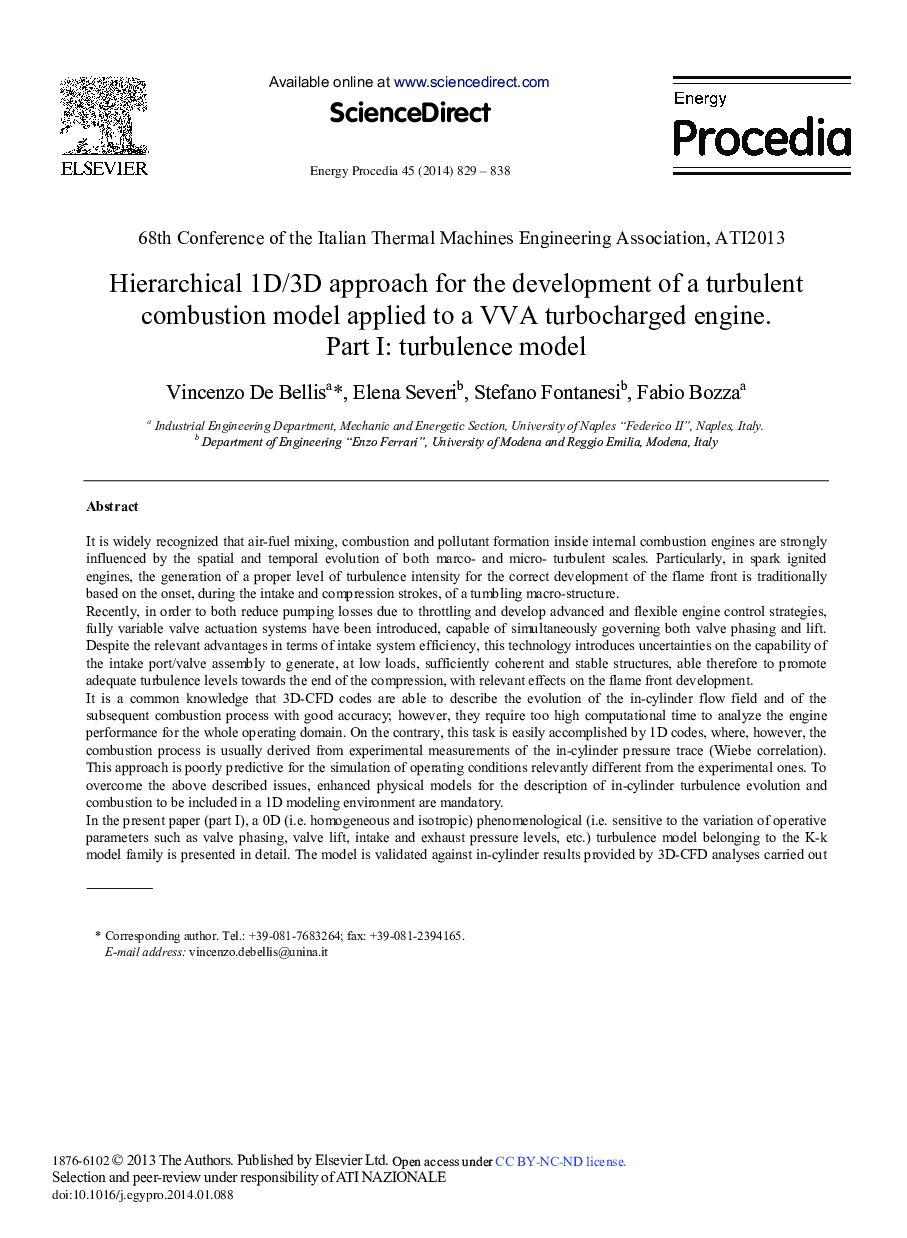| Article ID | Journal | Published Year | Pages | File Type |
|---|---|---|---|---|
| 1512052 | Energy Procedia | 2014 | 10 Pages |
It is widely recognized that air-fuel mixing, combustion and pollutant formation inside internal combustion engines are strongly influenced by the spatial and temporal evolution of both marco- and micro- turbulent scales. Particularly, in spark ignited engines, the generation of a proper level of turbulence intensity for the correct development of the flame front is traditionally based on the onset, during the intake and compression strokes, of a tumbling macro-structure.Recently, in order to both reduce pumping losses due to throttling and develop advanced and flexible engine control strategies, fully variable valve actuation systems have been introduced, capable of simultaneously governing both valve phasing and lift. Despite the relevant advantages in terms of intake system efficiency, this technology introduces uncertainties on the capability of the intake port/valve assembly to generate, at low loads, sufficiently coherent and stable structures, able therefore to promote adequate turbulence levels towards the end of the compression, with relevant effects on the flame front development.It is a common knowledge that 3D-CFD codes are able to describe the evolution of the in-cylinder flow field and of the subsequent combustion process with good accuracy; however, they require too high computational time to analyze the engine performance for the whole operating domain. On the contrary, this task is easily accomplished by 1D codes, where, however, the combustion process is usually derived from experimental measurements of the in-cylinder pressure trace (Wiebe correlation). This approach is poorly predictive for the simulation of operating conditions relevantly different from the experimental ones. To overcome the above described issues, enhanced physical models for the description of in-cylinder turbulence evolution and combustion to be included in a 1D modeling environment are mandatory.In the present paper (part I), a 0D (i.e. homogeneous and isotropic) phenomenological (i.e. sensitive to the variation of operative parameters such as valve phasing, valve lift, intake and exhaust pressure levels, etc.) turbulence model belonging to the K-k model family is presented in detail. The model is validated against in-cylinder results provided by 3D-CFD analyses carried out
